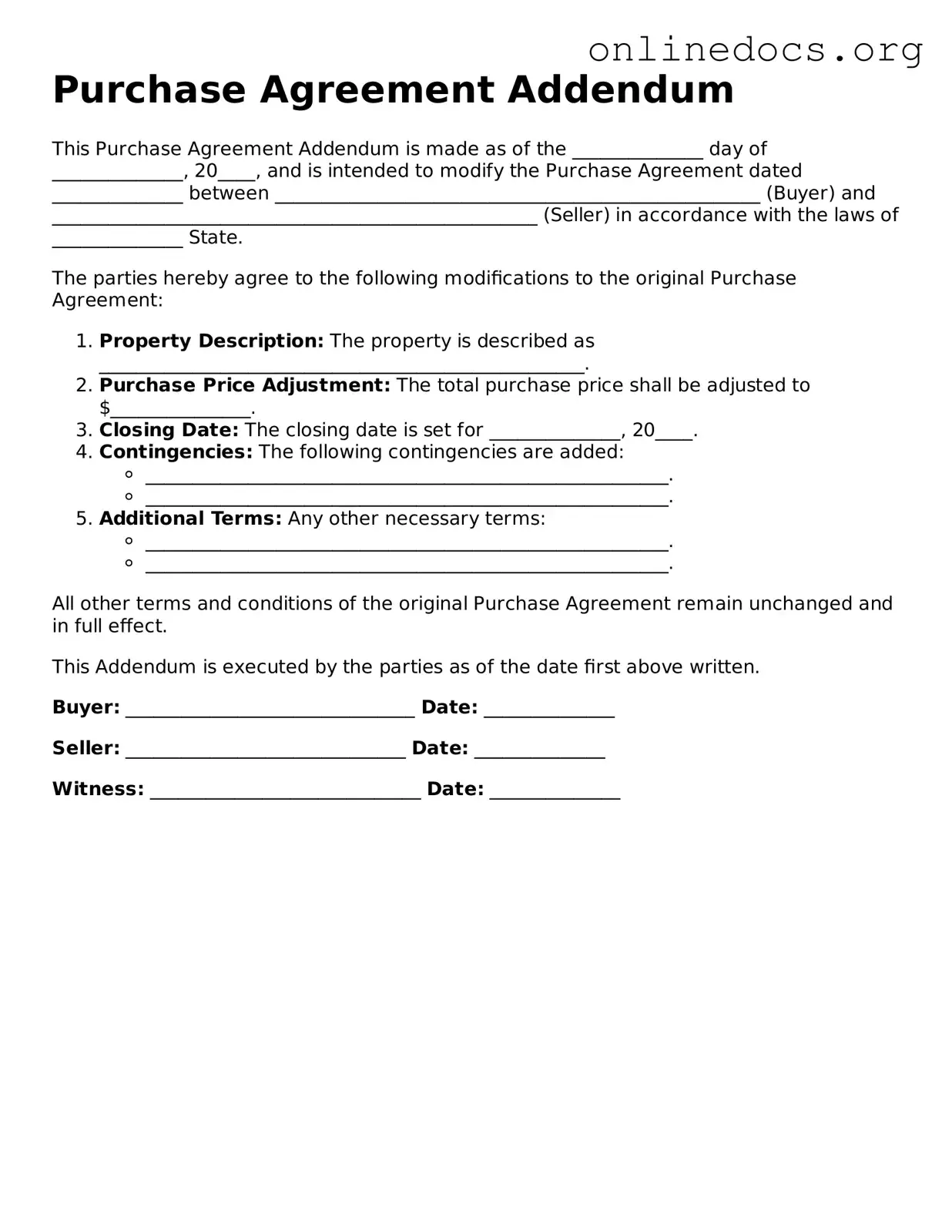The Purchase Agreement Addendum is similar to the Lease Agreement Addendum. Both documents serve as modifications to existing contracts, allowing parties to clarify or change specific terms without creating an entirely new agreement. For instance, if a tenant and landlord wish to alter the duration of a lease or adjust rental terms, they can use a lease addendum to document these changes clearly and legally.
Another comparable document is the Sales Contract Addendum. This form is used to make changes or add details to a sales contract, such as adjusting the purchase price or including additional contingencies. Both addendums ensure that all parties are on the same page regarding the updated terms, preventing misunderstandings down the line.
The Escrow Agreement Addendum is also akin to the Purchase Agreement Addendum. It modifies the original escrow agreement, which outlines the terms under which funds are held during a transaction. Similar to the Purchase Agreement Addendum, it allows for adjustments to be made to the escrow process, ensuring all parties agree on how and when funds will be released.
The Joint Venture Agreement Addendum shares similarities as well. This document is used when partners in a joint venture want to amend their original agreement. Whether it’s changing profit-sharing terms or adding new partners, this addendum facilitates clear communication and agreement on the updated terms, much like the Purchase Agreement Addendum does for buyers and sellers.
The Confidentiality Agreement Addendum is another related document. It can modify existing confidentiality agreements to include new information or adjust the scope of confidentiality. Just as the Purchase Agreement Addendum clarifies terms between buyers and sellers, this addendum ensures that all parties understand their obligations regarding sensitive information.
When engaging in any property transaction, it's important to have the appropriate documentation to ensure legality and clarity. One crucial document is the New York Bill of Sale, which acts as a proof of ownership transfer. For those looking for templates or guidance on such forms, resources like legalformspdf.com can be incredibly helpful in providing the necessary documents needed for a seamless transaction.
The Employment Agreement Addendum is also relevant. It allows employers and employees to modify terms of employment, such as salary or job responsibilities. This addendum provides a clear framework for changes, ensuring both parties are aware of and agree to the new terms, similar to how the Purchase Agreement Addendum functions in real estate transactions.
The Non-Disclosure Agreement (NDA) Addendum shares a similar purpose as well. It can be used to expand or clarify the terms of an existing NDA. This is important when new information needs to be protected or when the scope of confidentiality needs to change, just as the Purchase Agreement Addendum updates the terms of a purchase deal.
Lastly, the Financing Addendum is comparable. This document is used to outline specific financing terms for a transaction. It can specify loan amounts, interest rates, or conditions for financing. Like the Purchase Agreement Addendum, it helps ensure that all parties have a clear understanding of the financial aspects of the agreement, reducing the potential for disputes later on.
